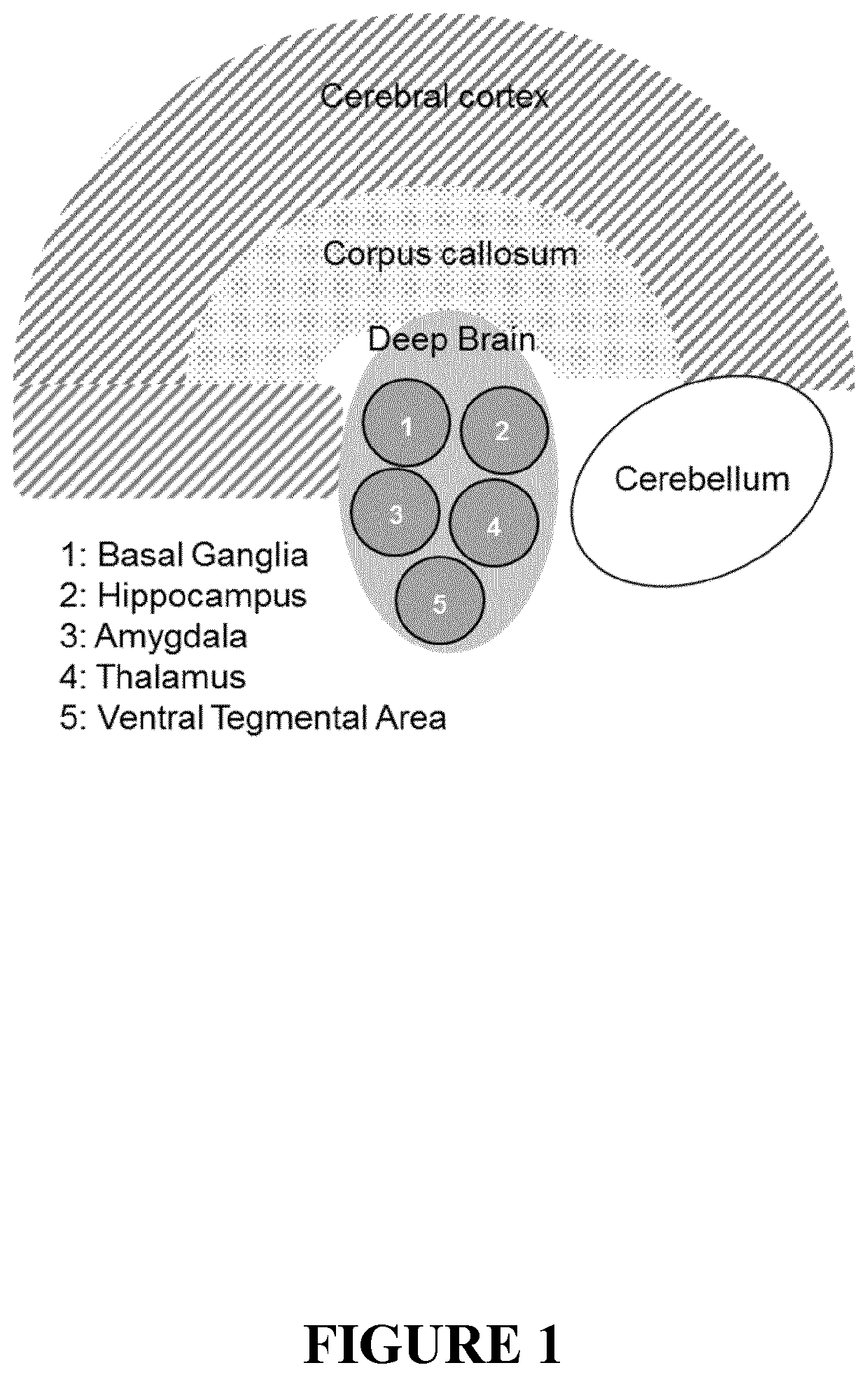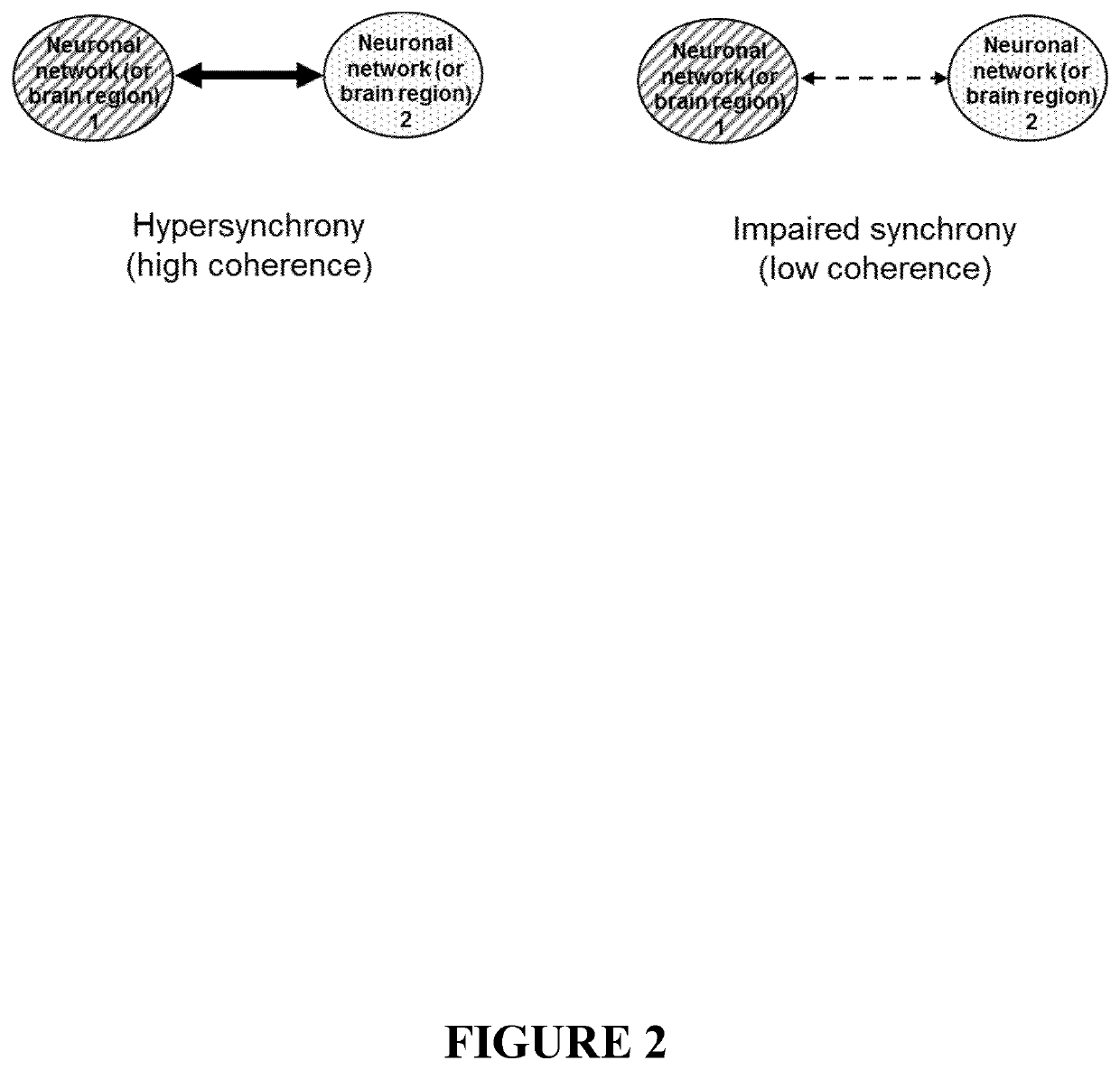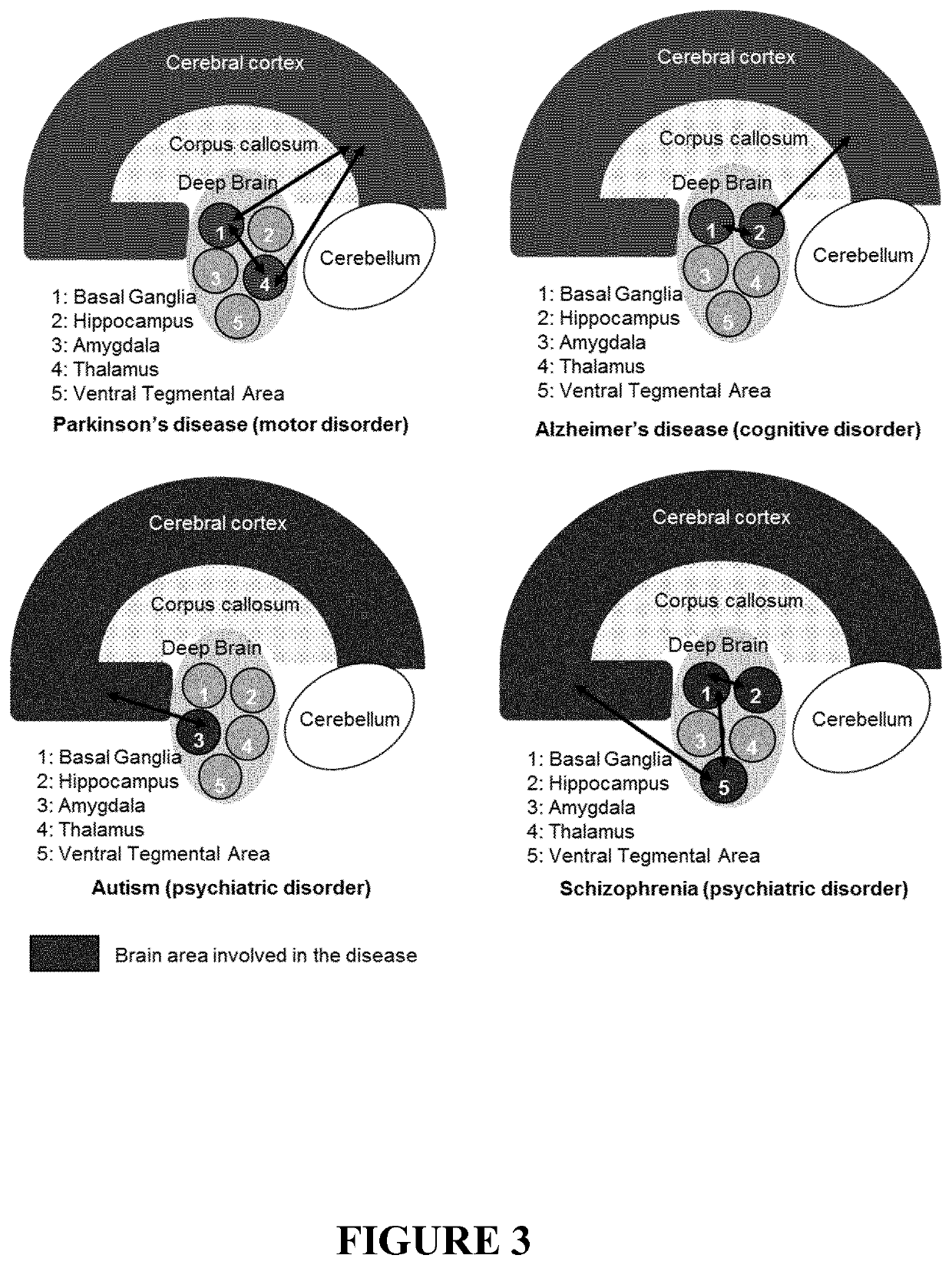Nanoparticles for use for treating a neuronal disorder
a neuronal disorder and nanoparticle technology, applied in the direction of drug compositions, artificial respiration, therapy, etc., can solve the problems of simple tasks, inability to perform simple tasks, and inability to control the part of the body controlled by those cells, so as to reduce the known potential toxicity and reduce the applied current
- Summary
- Abstract
- Description
- Claims
- Application Information
AI Technical Summary
Benefits of technology
Problems solved by technology
Method used
Image
Examples
example 1
Nanoparticles Prepared with a Conductor Material: Synthesis of Gold Nanoparticles Coated with a Biocompatible Coating having a Neutral Surface Charge
[0183]Gold nanoparticles were synthesized by reducing a gold chloride salt (HAuCl4) with a capping agent (sodium citrate) (protocol was adapted from G. Frens Nature Physical Science 241 (1973) 21). In a typical experiment, HAuCl4 solution was heated to boiling. Subsequently, sodium citrate solution was added. The resulting solution was maintained under boiling for an additional period of 5 minutes.
[0184]A 0.22 μm filtration (filter membrane: poly(ether sulfone) (PES)) of the nanoparticles' suspension was performed and gold concentration in suspension was determined by a UV-visible spectroscopy assay at 530 nm.
[0185]A surface coating was performed using α-methoxy-ω-mercaptopoly(ethylene glycol) 20 kDa (“thiol-PEG20 kDa”). A sufficient amount of “thiol-PEG 20 kDa” was added to the nanoparticles' suspension to reach at least half a monolay...
example 2
Nanoparticles Prepared with a Conductor Material: Synthesis of Gold Nanoparticles Coated with a Biocompatible Coating having a Negative Surface Charge
[0188]Gold nanoparticles were prepared as described in example 1 (same gold inorganic core).
[0189]A 0.22 μm filtration on PES membrane filter was performed and gold concentration in suspension was determined by a UV-visible spectroscopy assay at 530 nm.
[0190]A biocompatible surface coating was performed using meso-2, 3-dimercaptosuccinic acid (DMSA). A sufficient amount of DMSA was added to the nanoparticles' suspension to reach at least half a monolayer coverage (2.5 molecules / nm2) on the surface. pH was adjusted between 7 and 7.2, and the nanoparticles' suspension was stirred overnight.
[0191]The hydrodynamic diameter (measure in intensity) was determined by Dynamic Light Scattering (DLS) with a Nano-Zetasizer (Malvern) at a scattering angle of 173° with a laser emitting at 633 nm, by diluting the nanoparticles' suspension in water (f...
example 3
Nanoparticles Prepared with an Insulator Material Having a Low Relative Dielectric Constant Equal to or Below 100: Synthesis of Zirconium Oxide Nanoparticles Coated with a Biocompatible Coating having a Neutral Surface Charge
[0193]Zirconium oxide (ZrO2) nanoparticles were synthesized by precipitation of zirconium chloride (ZrCl4) with tetramethyl ammonium hydroxide (TMAOH) at a basic pH. The resulting suspension was transferred in an autoclave and heated at a temperature above 110° C. After cooling, the suspension was washed with deionized water and acidified.
[0194]A 0.22 μm filtration on PES membrane filter was performed and (ZrO2) nanoparticles' concentration was determined by drying the aqueous solution into a powder and weighing the as-obtained mass.
[0195]A biocompatible coating was prepared using silane-poly(ethylene) glycol 2 kDa (“Si-PEG 2 kDa”). A sufficient amount of “Si-PEG 2 kDa” was added to the nanoparticles' suspension to reach at least half a monolayer coverage (2.5 m...
PUM
| Property | Measurement | Unit |
|---|---|---|
| dielectric constant εijk | aaaaa | aaaaa |
| dielectric constant εijk | aaaaa | aaaaa |
| band gap | aaaaa | aaaaa |
Abstract
Description
Claims
Application Information
 Login to View More
Login to View More - R&D Engineer
- R&D Manager
- IP Professional
- Industry Leading Data Capabilities
- Powerful AI technology
- Patent DNA Extraction
Browse by: Latest US Patents, China's latest patents, Technical Efficacy Thesaurus, Application Domain, Technology Topic, Popular Technical Reports.
© 2024 PatSnap. All rights reserved.Legal|Privacy policy|Modern Slavery Act Transparency Statement|Sitemap|About US| Contact US: help@patsnap.com










